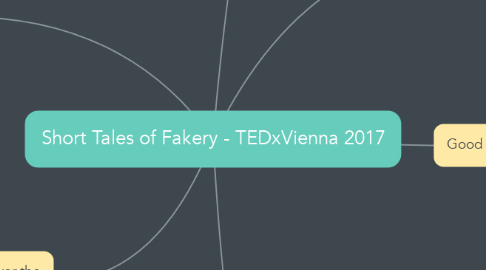Short Tales of Fakery - TEDxVienna 2017
作者:Raphaela Brandner


1. Collision of world cultures over the past decade
1.1. We have to understand the utility of fakes by looking at it through the eyes of its culture
1.2. We can assign the fakes value by understanding its context
2. Good fake or bad fake?
2.1. Do you give consent?
2.2. Beware the weaponized fake.
2.3. Assume there is a context for every fake.
3. Speaker
3.1. PABLO GARCIA
3.1.1. Artist & Designer | USA
3.1.2. Pablo Garcia (@prgarc) | Twitter
4. Fake
4.1. Questioning the authenticity of something, but also its value
4.2. Long history of fake in art history
4.2.1. Often about political control
4.3. Often about deception
4.4. Positive side to fakes in the creative fields, e.g. simulations, virtual reality
5. Good Fake vs Bad Fake
5.1. Good fakes are ok, like magic tricks, because we consent to the fake
5.2. Information age has brought new challenges: #Fake in the post-internet age
5.2.1. interconnected sharing community nowadays
5.2.2. #Fake = weaponized version of the word, as used by Trump
5.2.3. #Fake can be conspiracy theories
5.3. #Fake is more dangerous than fake because it's about control
5.3.1. But there's a positive side
6. Shenzhen, China
6.1. Basically, anything with batteries comes from there
6.2. Different levels of fake available
6.2.1. e.g. A-level iPhone fake for 90 Euros, vs C-level fake for 60 Euros
6.3. Some cheap fakes are actually better than the original
6.3.1. Massive open source project, original ideas are improved upon
6.3.1.1. Next step of innovation
6.4. Contextualization of what we call fake
6.5. Oil Painting Village
6.5.1. Oil paints to order
6.5.1.1. Buy in bulk original oil paintings
6.5.1.2. Western media would call them fakes
6.5.1.2.1. But nobody actually assumes they are 'originals'
6.5.1.2.2. So is it bad? There is no deception here
